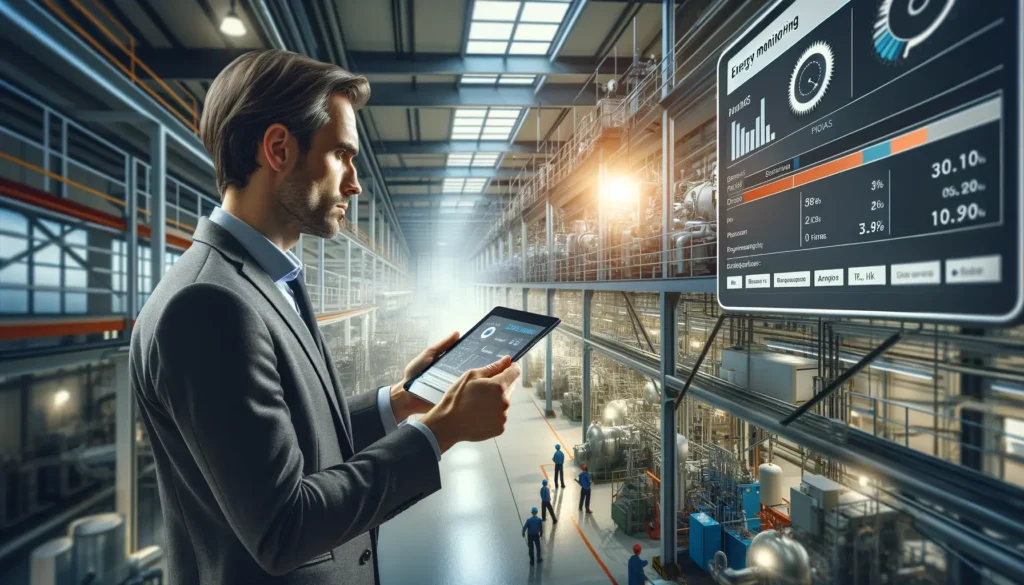
Boosting Energy Efficiency with the Internet of Things
The integration of the Internet of Things (IoT) into the fabric of engineering is more than just a technological leap; it’s a necessary evolution towards sustainability. When we talk about the role of Internet of Things in sustainable engineering, we’re delving into a world where innovation meets responsibility, where every byte of data and every connected device plays a part in shaping a greener future.
This isn’t just about making processes faster or more efficient; it’s about rethinking how we use resources and how we can lessen our impact on the planet.IoT isn’t just changing the game in engineering; it’s redefining what it means to be sustainable in an increasingly connected world.
What Is The Internet of Things (IoT)?
The Internet of Things refers to the network of physical objects or “things” embedded with sensors, software and other technologies that enable them to connect and exchange data with other devices and systems over the internet. These connected devices can range from household appliances, vehicles, industrial machinery, wearables and more.
The IoT allows for these devices to communicate with each other and gather data, which can then be analysed and used to improve processes, efficiency, and sustainability. This interconnectedness is what makes the IoT such a powerful tool in engineering.
Internet of Things: A Catalyst for Energy Management in Sustainable Engineering
IoT’s role in enhancing energy efficiency cannot be understated. By leveraging IoT sensors and smart monitoring systems, engineering companies can achieve unprecedented levels of energy optimisation. These technologies provide real-time data, allowing for immediate adjustments to reduce energy wastage.
For example, in site work and installations, IoT-enabled devices can monitor energy use and adjust machinery operations for peak efficiency. This not only cuts down on excessive energy consumption but also significantly reduces operational costs. Here’s an expanded look at how IoT is enhancing energy efficiency.
If you want to find the secrets of the universe, think in terms of energy, frequency and vibration. – Nikola Tesla
1. Real-time Energy Monitoring
IoT sensors provide real-time data on energy consumption across various operations. This allows engineering firms to monitor energy usage continuously and identify areas where energy is being used inefficiently. Below are a few examples, scenarios or applications of IoT:
- In manufacturing plants, IoT sensors can track the energy consumed by each machine, highlighting opportunities for reducing idle times or optimising machine usage schedules.
- For HVAC systems in large facilities, IoT devices can monitor room occupancy and adjust temperature settings automatically to save energy when areas are unoccupied.
2. Predictive Maintenance
Internet of Things devices can predict equipment failures before they occur. By servicing machinery at the right time, companies avoid energy wastage due to inefficient operation and reduce the likelihood of costly breakdowns.
- Vibration sensors on motors can detect imbalances or wear before a breakdown, allowing for timely maintenance that keeps the motor running at peak efficiency.
- In energy-intensive processes like steel fabrication, predictive maintenance ensures that all equipment operates with optimal energy consumption.
3. Automated Adjustments for Peak Efficiency
IoT systems can automatically adjust machinery operations based on real-time data. This ensures that machines operate at peak efficiency, reducing energy wastage.
- In a process like deep hole drilling, IoT-enabled devices can adjust drilling speeds and feeds in real-time for optimal performance, thereby conserving energy.
- For waterjet cutting operations, Internet of Things systems can regulate pump speeds and abrasive flow rates to match the cutting requirements, minimising unnecessary energy use.
4. Integrating Internet of Things Tech with Renewable Energy Sources
IoT technologies facilitate the integration of renewable energy sources into engineering operations, optimising their use and reducing reliance on non-renewable energy.
- IoT systems can manage the transition between solar power and grid electricity in real-time, maximising the use of solar energy during peak hours.
- For businesses with wind turbines, IoT sensors can optimise blade angles and operation schedules based on wind patterns to maximise energy production.
5. Enhanced Data Analytics for Strategic Planning
IoT provides valuable data that can be used for strategic energy management planning. This data-driven approach leads to more informed decisions about energy use and investment in energy-efficient technologies.
- Data collected from IoT devices across different sites can be analyzed to identify patterns of energy waste, guiding investments in energy-saving technologies.
- Long-term data trends can inform decisions about upgrading machinery or retrofitting facilities for better energy efficiency.
This structured approach to detailing the role of IoT in enhancing energy efficiency provides a clear and comprehensive understanding of how IoT is forever changing energy management in the engineering sector.
Redefining Waste Reduction with IoT
In the realm of waste management, IoT stands as a transformative technology. By tracking material usage and waste generation in real-time, IoT systems can identify inefficiencies and suggest improvements. For instance, in processes like powder coating or steel fabrication, IoT can ensure optimal use of materials, thus minimising waste. Additionally, IoT can play a pivotal role in recycling processes by tracing and sorting materials more effectively.
We must rethink the future of our environment and use technology like IoT to create a more circular economy that is restorative and regenerative by design. – Ellen MacArthur
The Global Impact of IoT Across Sectors
The Internet of Things (IoT), coupled with Artificial Intelligence (AI) and Machine Learning (ML), is not confined to engineering alone. Its influence spans across various sectors, making operations smarter and more efficient. Let’s look at some of the leading companies in the IoT, AI, and Machine Learning arena, not necessarily in engineering:
Siemens
Known for its pioneering efforts in industrial automation, Siemens excels in implementing IoT and AI in engineering, particularly in manufacturing and process industries. Their digital platforms and solutions like MindSphere are revolutionising how data is utilised for operational efficiency and predictive maintenance.
IBM
With its Watson platform, IBM has been a significant player in AI and IoT. They provide robust Internet of Things solutions that are widely used in various engineering fields, including manufacturing and energy management, helping in predictive maintenance and asset optimisation.
Amazon Web Services (AWS)
As a leading cloud services provider, Amazon Web Services offers innovative IoT solutions that help enterprises connect devices, gather data and analyse it to create actionable insights. With its broad portfolio of tools and services, AWS is providing scalable and secure IoT solutions for engineering companies worldwide.
General Electric (GE)
GE’s Predix platform offers powerful IoT solutions tailored for industrial operations. They leverage AI and Machine Learning to optimise processes, enhance equipment reliability, and provide valuable insights in sectors like aviation, power, and healthcare technology.
Bosch
Bosch is a key player in the IoT space, especially in the automotive and manufacturing sectors. Their IoT Suite offers a wide range of solutions for connected devices and systems, driving efficiency and innovation in engineering processes.
Microsoft
Through its Azure IoT suite, Microsoft offers a range of IoT services that enable businesses to connect, monitor, and control Internet of Things assets. Their cloud-based solutions, coupled with AI and Machine Learning capabilities, are crucial in data analysis and decision-making processes in engineering.
Honeywell
Honeywell is renowned for integrating IoT into their engineering solutions, especially in building management systems and industrial automation. They utilise AI and data analytics to improve efficiency, safety, and operational intelligence.
Schneider Electric
Specialising in energy management and automation, Schneider Electric uses Internet of Things, AI, and Machine Learning to create more efficient and sustainable energy solutions. Their EcoStruxure platform is a leader in leveraging IoT for smart and green energy management.
ABB
ABB is a global leader in industrial technology, integrating IoT, AI, and robotics in their engineering solutions. Their IoT solutions focus on improving productivity, flexibility, and efficiency in various sectors, including robotics, power, and automation technologies.
These companies are not just leaders in technology; they are reshaping the engineering landscape by harnessing the power of Internet of Things, AI, and Machine Learning, driving forward innovations that are sustainable, efficient, and groundbreaking.
Recommended: Explore 7 Key Trends In The Future Of Manufacturing
Final Thoughts: Embracing Internet of Things for a More Sustainable Future
IoT’s role in sustainable engineering is not limited to just energy efficiency and waste reduction. It spans across various aspects of engineering, from optimising supply chains to improving safety and reducing emissions. As the world moves towards a more connected future, it’s essential for engineers to embrace IoT and use it to create a more sustainable world.
In essence, the integration of Internet of Things into engineering practices is not just about being technologically advanced; it’s about adapting to a changing world and taking responsibility for our impact on the environment.
For more updates on engineering, manufacturing and technology, follow our blog or visit the PRV website. You can also join the conversation on social media using the hashtag #PRVtech.
Technology like IoT is the key to balancing our economic, environmental and social needs, allowing us to live sustainably and responsibly. – James Dyson


 Mail:
Mail: 




